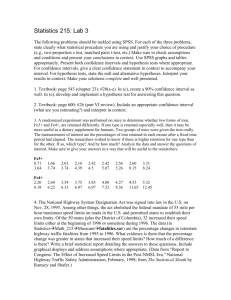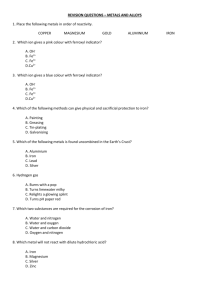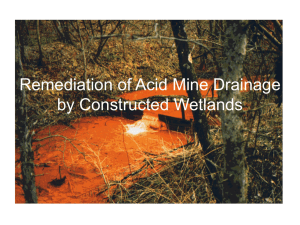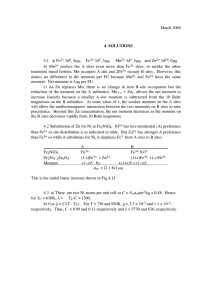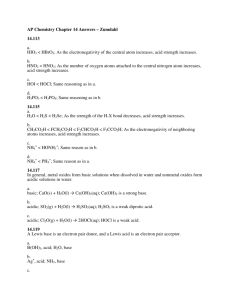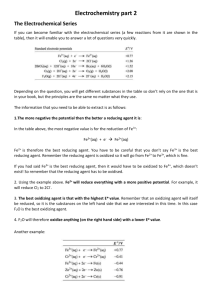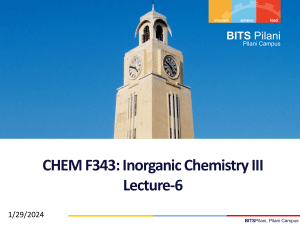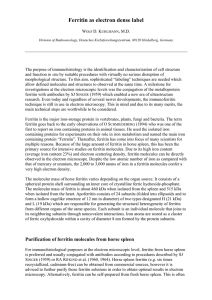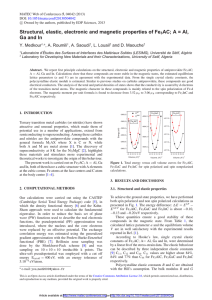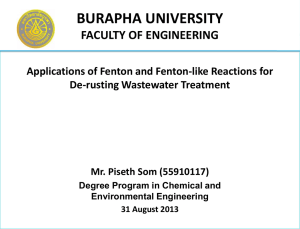Fe 3+ - Bryn Mawr College
advertisement
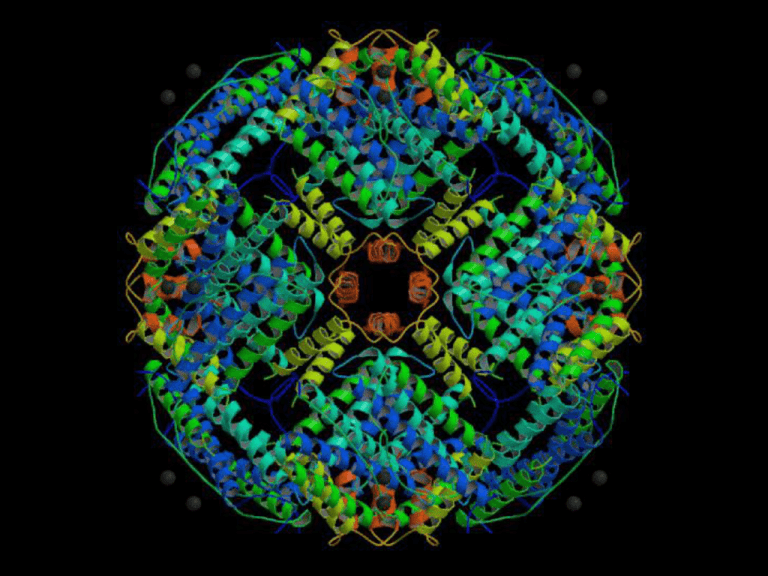
C4 3 x C4 axes 4 x C3 axes O symmetry (no mirror planes) C3 C4 C4 C3 Fe3+Ox(OH)y core C4 One bundle C3 C4 Fe3+O(OH) Fe2+ oxid Fe2+ exit C3 24 subunuits of 4 a-helix bundles Like an iron malted milk ball! Fact: At pH 7, [Fe3+] = 10-18 M why? • Ferritin manages to concentrate ferric ion to mM concentrations (10-3 M). • Lack of gene for ferritin lethal. The reaction 2000 Fe2+(H2O)6 + O2 1000 Fe3+—O-O—Fe3+ 2000 Fe3+(H2O)6 + H2O2 fast, msec slow, minutes or hours Enters at C3 pores; ‘translocating mineral precursor’ rxn occurs in subunits Fe3+2O3(H2O)1000 + 5000 H+ Exits from C3 pores How and where iron exits from ferritin for cellular use is uncertain. Proline substitution for conserved leucine 134 (L134P) allowed normal assembly but increased iron exit rates. X-ray crystallography of H-L134P ferritin revealed localized unfolding at the 3-fold axis, also iron entry sites, consistent with shared use sites for iron exit and entry. The junction of three ferritin subunits appears to be a dynamic aperture with a "shutter" that cytoplasmic factors might open or close to regulate iron release in vivo. Localized unfolding at the junction of three ferritin subunits. A mechanism for iron release? Takagi, H., Shi, D., Ha, Y., Allewell, N.M., Theil, E.C. (1998) J.Biol.Chem. 273: 18685-18688

